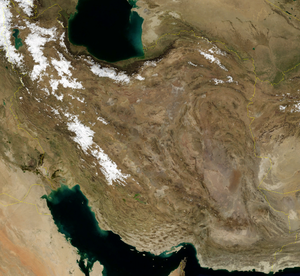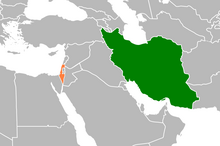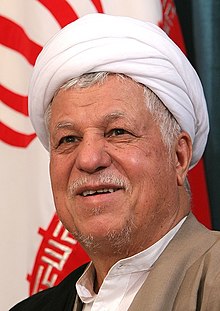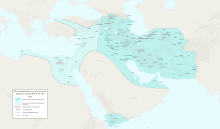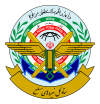Image 9Peroz I (
Middle Persian:
𐭯𐭩𐭫𐭥𐭰,
romanized: Pērōz) was the
Sasanian King of Kings (
shahanshah) of
Iran from 459 to 484. A son of
Yazdegerd II (
r. 438–457), he disputed the rule of his elder brother and incumbent king
Hormizd III (
r. 457–459), eventually seizing the throne after a two-year struggle. His reign was marked by war and famine. Early in his reign, he successfully quelled a rebellion in
Caucasian Albania in the west, and put an end to the
Kidarites in the east, briefly expanding Sasanian rule into
Tokharistan, where he issued gold coins with his likeness at
Balkh. Simultaneously, Iran was suffering from a seven-year famine. He soon clashed with the former subjects of the Kidarites, the
Hephthalites, who possibly had previously helped him to gain his throne. He was defeated and captured twice by the Hephthalites and lost his recently acquired possessions.
In 482, revolts broke out in the western provinces of
Armenia and
Iberia, led by
Vahan Mamikonian and
Vakhtang I respectively. Before Peroz could quell the unrest there, he was defeated and killed in his third war with the Hephthalites in 484, who seized the main Sasanian cities of the eastern region of
Khorasan−
Nishapur,
Herat and
Marw. Taking advantage of the weakened Sasanian authority in the east, the
Nezak Huns subsequently seized the region of
Zabulistan. Peroz was the last
shahanshah to mint
unique gold coins in the
Indian region of
Sindh, which indicates that the region was lost around the same period. Albeit a devout
Zoroastrian, Peroz supported the newly established Christian sect of
Nestorianism, and just before his death, it was declared the official doctrine of the
Iranian church. (
Full article...)
![Image 1 Portrait by Ludwig von Maydell [de] (1831) Khachatur Abovian (Armenian: Խաչատուր Աբովյան, romanized: Khach’atur Abovyan; October 15 [O.S. October 3] 1809 – disappeared April 14 [O.S. April 2] 1848) was an Armenian polymath, educator, scientist, philosopher, writer, poet and an advocate of modernization. He mysteriously vanished in 1848 and was eventually presumed dead. Reputed as the father of modern Armenian literature, he is best remembered for his novel Wounds of Armenia. Written in 1841 and published posthumously in 1858, it was the first novel published in the Modern Armenian language, based on the Yerevan dialect instead of Classical Armenian. Abovian was far ahead of his time and virtually none of his works were published during his lifetime. Only after the establishment of the Armenian SSR was Abovian accorded recognition and stature. Abovian is regarded as one of the foremost figures not just in Armenian literature, but Armenian history at large. Abovian's influence on Western Armenian literature was not as strong as it was on Eastern Armenian, particularly in its formative years. (Full article...)](http://upload.wikimedia.org/wikipedia/en/d/d2/Blank.png)
